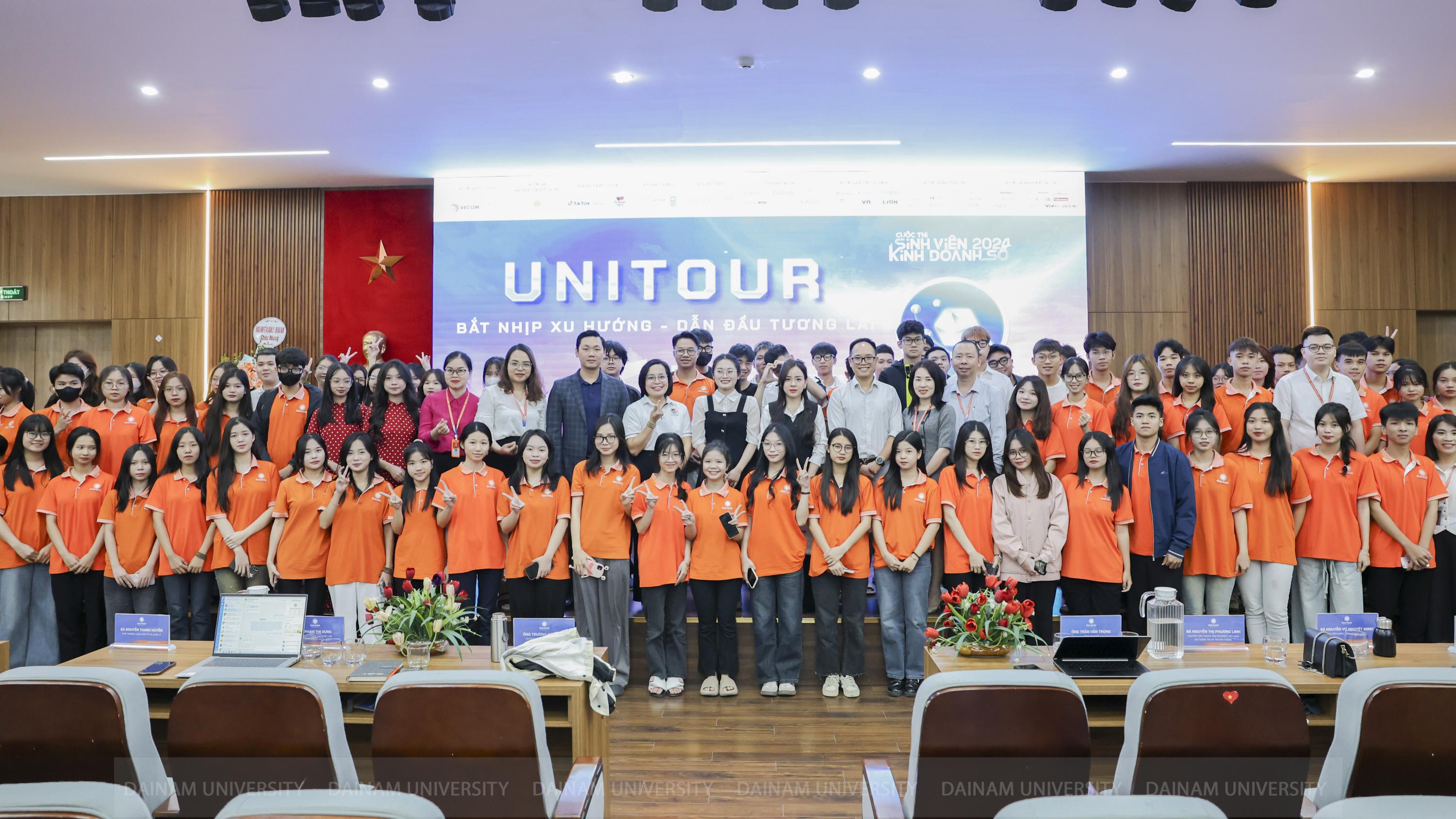Applying active teaching methods to the Market Leader curriculum for students of course 14

- Lecturer: Nguyen Thi Mai Suong
- Department: English Language
Nowadays, learning English is becoming extremely important for students at universities. But the question is always how to make teaching and learning more effective. With the new approach of taking the learner as the center, teaching and learning English is having positive changes and innovations in methods towards active teaching and learning. Active teaching methods (PPDH positive) is a shortened term, used in many countries to refer to educational methods, teaching towards promoting the positivity, initiative, and creativity of learners. PPDH positive aims to activate, activating the cognitive activities of learners, that is, focusing and promoting the positivity of learners, not focusing on promoting the positivity of teachers, however, to teach by active methods, teachers must make more efforts than teaching by passive methods.

The four characteristics of active teaching methods include: Teaching through student activities; Teaching focusing on training self-study methods; Enhancing individual learning combined with cooperative learning; Combining teacher assessment and student self-assessment. In these four active teaching methods, I personally appreciate the teaching method focusing on training self-study methods the most. Self-study is a form of learning. So self-study activities must also have appropriate purposes, content and methods. The guided self-study form must both ensure the correct implementation of modern teaching viewpoints and be suitable for students' cognitive characteristics. It is necessary to understand the relationship between teaching and self-study as the relationship between external influences and internal activities. The teacher's teaching influence is the outside supporting students' self-development, only students' self-study is the decisive factor in students' self-development. The guided self-study form is the guidance for students to self-study. In guided self-study, students receive guidance from two sources: from instructional materials and directly from teachers. Students' self-study activities have many stages and steps, carried out through their own learning activities. This is a process of self-awareness, activeness, and self-reliance in acquiring scientific knowledge through their own actions towards certain goals. Therefore, the process of organizing teaching and learning must make students' learning activities change from a passive to an active state. Students know how to organize and plan the tasks to be carried out during self-study time, know how to mobilize the necessary conditions and means to complete each task, know how to self-check and self-evaluate the results of their own self-study activities.

The cooperative attitude of students is extremely important, but the guidance factor of the teacher is not to be underestimated. Teachers will be like the boat steering the ferry with students as passengers crossing the river. So in each lesson, teachers need to be very dedicated and have active teaching methods to stimulate and inspire students to self-study. In the teaching process in general and teaching English in particular, teachers can apply a variety of teaching techniques to help their lessons be effective while still being lively and engaging. The techniques that teachers can use include: gallery technique, puzzle technique, tablecloth technique, project technique, role-playing and role-changing technique, and dough-kneading hand technique. These techniques are all very useful for different subjects and can be flexibly applied in each subject but personally, when I am teaching English, I like to choose the techniques of puzzles, tablecloths, projects and role-playing, role-changing to integrate into my teaching process.

Currently, Dai Nam University is preparing to use the Market Leader textbook (3rd edition) by authors: David Cotton, David, Falvey and Simon Kent for students of course 14. Personally, I feel that Market Leader brings a lot of value to both teachers and students. And I think that if we apply active teaching methods to apply this textbook, we will exploit the parts in the Market Leader book better. For example, teachers can apply the puzzle technique for the Language Review section to achieve the highest teaching efficiency.
The puzzle technique is a cooperative teaching technique that combines individuals, groups and links between groups to solve a complex task, stimulating active participation as well as enhancing the role of individuals in the cooperation process.
How to proceed:
Round 1: Expert Group
The class will be divided into groups (about 3-6 people). Each group will be assigned a task with different learning content. For example:
+ Group 1: Grammar task A
+ Group 2: Grammar task B
+ Group 3: Grammar task C
Each individual works independently for a few minutes, thinking about the question, topic, and recording their ideas.
When discussing in groups, make sure that each member of each group can answer all the questions in the assigned task and become an expert in the field they have studied and be able to present the group's answers in round 2.

Round 2: Puzzle group
Form a new group of about 3-6 people (including 1-2 people from group 1; 1-2 from group 2; 1-2 people from group 3...), called a puzzle group.
Round 1 questions and answers are fully shared with each other by new group members.
When all members of the new group understand and master all the content in round 1, new tasks will be assigned to the groups to solve (note that this new task must be closely related to the knowledge acquired in round 1).
New groups are tasked with presenting and sharing their results.
Some notes when organizing teaching using the puzzle technique:
- Ensure that the information from the pieces comes together to understand the big picture of a problem and is the basis for solving a complex task in round 2.
- Experts in round 1 may have different levels of expertise, so it is necessary to identify timely support factors so that all experts can complete the tasks in round 1, preparing for round 2.
- The number of pieces should not be too large to ensure that members can pass on knowledge to each other.
- The characteristic of the new task in round 2 is that it is a complex task and can only be solved on the basis of mastering the knowledge acquired in round 1. Therefore, it is necessary to clearly identify the necessary factors of knowledge, skills, information, ... as well as the necessary supporting factors to solve this complex task.










